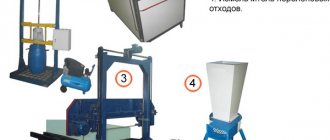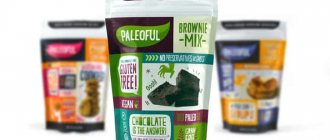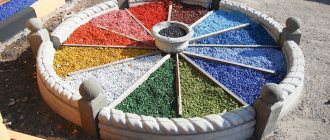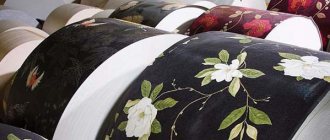Today, canned products have not lost their popularity among the population. The main change that the market has undergone is a decrease in the volume of home production and an increase in industrial production with subsequent sales in retail outlets. The reason for this trend is the increase in activity and employment of the population. Making jam is a fairly lengthy and labor-intensive process, but due to the popularity of the product and the low barrier to entry into the market, this business is quite profitable and promising.
Currently, a significant segment of the market consists of products from large industrial manufacturers. The share of small entrepreneurs here is insignificant, which, however, is not a consequence of fierce competition. The cost of industrial and household goods is approximately equal, and the population prefers natural production. This allows you, when entering the market, to sell your products on equal terms with large manufacturers.
Types of products and manufacturing technology
Jam is a product obtained by boiling berries and fruits with added sugar. Sometimes nuts, pine cones, rose petals, and dandelion flowers are used as raw materials. The main feature of this dessert is that the fruits included in it retain their shape. The finished product has a heterogeneous consistency and looks like berries (or pieces of fruit) in a viscous syrup. The jam has high nutritional value and good taste. Valuable chemicals contained in the original products are largely preserved.
Depending on quality indicators, jam is assigned one of three grades: extra, highest or first. It can be either specific (strawberry, raspberry, etc., obtained from one type of raw material), or blended (for example, pear-apple, made from a mixture of fruits). Along with concentrated jam, gelatinous fruit and berry desserts: jam and marmalade have become widespread in our country. They differ in consistency and manufacturing technology.
To produce jam, not only whole but also crushed fruits are used, which are boiled for a long time in sugar syrup, resulting in a gelled mass with parts of berries or fruits evenly distributed in it. Jam is made from fruit or berry puree. Spices (cloves, cinnamon and others) are often added to its composition. It has the appearance of a monotonous mass without solid inclusions.
Jam production as a business begins with searching for suppliers of high-quality raw materials, forming a product line and developing your own recipe. The technological process consists of the following stages:
- Preparation of raw materials. At this stage, the fruits are sorted, washed, if necessary, peeled, pitted, stalked and chopped
- Preparation of syrup. It is obtained from sugar, purified water, spices and molasses (the latter ingredient is not always added)
- Boiling the fruits in hot syrup and then allowing the mixture to settle. This operation is carried out from 1 to 5 times depending on the type of raw materials and the type of product that needs to be obtained at the output
- Curing and removing foam
- Packing and packing
In most cases, at the final stage, the finished jam is sterilized. It is sealed in sealed containers and processed at a temperature of 90-110°C for about 20 minutes. This allows you to increase the shelf life of products and avoid microbiological spoilage (fermentation, sugaring).
Product packaging
Containers for packaging and sale most often use glass, thermoplastic polymer or ready-made doy-pack bags. Depending on the sales market, they focus on more suitable volumes.
So, for sale in a store to the end consumer, you can use small jars of 200, 300 or 500 ml. But when selling to companies involved in the preparation of cakes, pies, pastries, you can package the jam in larger containers.
Today, one of the mandatory requirements is the accompanying information on the packaging. Therefore, the manufacturer must indicate the following points on the label:
- Trademark, brand logo.
- Name and address of production.
- Certification details.
- Name.
- Complete list of ingredients used in the composition.
- Exact net weight.
- Product shelf life and date of manufacture.
- Indicators of nutritional value (calories, proteins, fats, carbohydrates).
Material and technical resources
To open your own small workshop you will need a site measuring about 200 square meters. m (approximately 60% should be in the production area, the remaining 40 - in warehouse and administrative premises). We talked in detail about the existing hygiene requirements and zoning principles for food industry premises in an article about the sausage business. Having properly prepared the room, you should also take care of the equipment for making jam. Most manufacturing companies today offer universal equipment capable of producing jam, marmalade and marmalade. Production lines usually include:
- Receiving hopper
- Washing container
- Conveyor
- Chopper
- Blancher
- Digester with evaporation unit
- Vacuum pump
- Homogenizer
- Several drives for finished products
- Sterilizer
- Filling and dosing machine
In addition to the basic equipment, you will also need scales, various vats and containers, sifters for bulk products and other equipment. To store raw materials, you will need to purchase refrigeration and freezers. Transportation of some types of fruit and berry desserts requires special conditions, so it is advisable to immediately purchase a truck with an isothermal van.
Production requirements
General technical conditions for preparing jam are listed in GOST R 53118-2008. The document defines the classification of jam (according to production method and types), the organoleptic properties of the finished product, requirements for raw materials, packaging, labeling, transportation and storage.
The room in which the production takes place must be spacious and divided into areas for storing raw materials, direct cooking and storing finished products. It is also necessary to have hot water supply and electricity.
The manufacturer must adhere to sanitary rules and food production standards. Raw materials for jam must be thoroughly washed, storage containers sterilized, and the work area cleaned. The manufacturer must adhere to the rules of personal hygiene.
What documents are needed for work?
The production of jams and preserves and their subsequent sale is a type of business activity aimed at making a profit, therefore, it must be registered in the prescribed manner with the tax authority. You can choose any organizational and legal form that is convenient for you: individual entrepreneur (IP), limited liability company (LLC), etc. To understand the advantages and disadvantages of each of these forms, read which is better: individual entrepreneur or LLC. The code for the type of economic activity according to the OKVED classifier under which such production falls is 10.39 - “Other types of processing and canning of fruits and vegetables.” This code must be indicated in the appropriate column of the enterprise registration application.
Having gone through the stage of business registration, you should contact the certification authorities to receive a declaration of compliance of manufactured products with the requirements of the Technical Regulations of the Customs Union “On Food Safety”. A registration certificate issued by the tax service and a declaration of conformity received at a certification center - these documents will allow you to freely sell your products not only to private clients, but also to large retail chains, catering organizations, confectionery factories, etc. It is also recommended immediately register a trademark so that your products become recognizable and find regular customers.
Recipes
You can make jam in different ways, according to different recipes. Here are a few recipes that are more suitable for small production if the products are made at home:
Apricot jam
To prepare 7 jars of jam with a capacity of 0.5 liters you will need 2.5 kg of sugar and 3 kg of apricot. The raw materials should not be overripe or too soft.
Wash the fruits, remove the seeds, and cut into halves. Place the raw materials in layers in a deep pan, sprinkling each layer with sugar. Leave for several hours.
When the apricots give juice, place the container on the fire and boil the apricots for 5 minutes after boiling. The jam does not mix. The foam is removed. After this, the jam cools for an hour. The procedure for boiling the fruit is repeated 3 times.
Hot jam is poured into dry, sterilized jars and sealed with lids.
Raspberry jam
To prepare it, you need to take a kilogram of sugar for every kilogram of raspberries. The berries are carefully washed so as not to damage them, the sepals are removed and carefully sorted.
Sprinkle the raspberries with sugar and leave for 4-5 hours. The resulting juice is drained and boiled for 10 minutes. Pour the berries into the syrup, bring the mixture to a boil over low heat and cook for 5 minutes.
The finished product is poured into jars and sealed.
Gooseberry jam
To prepare this type of jam, take a kilogram of gooseberries, the same amount of sugar, half a teaspoon of vanilla, a teaspoon of citric acid, 100 g of cherry leaves. Wash the gooseberries, cut off the ends, cut each berry on the side and remove the seeds.
The berries should be filled with ice water and left in a cool place for 6 hours. After this, drain the liquid. Wash the cherry leaves, pour 5 glasses of water, add citric acid. Place the container over medium heat and bring to a boil. The liquid should boil for 5 minutes, after which the broth should be drained into a saucepan.
Pour sugar into the prepared broth and put it back on the fire. Stir until the sugar is completely dissolved. The syrup should boil, then add vanilla and stir. Pour the syrup over the berries and leave for 15 minutes, then bring to a boil and simmer for 15 minutes.
Pour the jam into jars and seal.
Financial plan
The total cost of starting a business will be approximately 2.5-3 million rubles. This amount includes the costs of renting and renovating premises, purchasing a production line, paperwork, purchasing the first batch of raw materials, developing labels, etc. You will need information on how to get subsidies for starting a small business. Current expenses of an enterprise include costs for raw materials and consumables, utility bills, taxes, labor costs, transportation costs, etc. It is necessary to calculate the amount of monthly expenses based on what raw materials you will purchase, what products and in what volumes you will make. For example, the cost of 0.5 kg of premium raspberry jam in a glass container is approximately 70 rubles, and the wholesale price is about 75 rubles. If you produce 15 tons of raspberry jam per month, production costs will be 2,100,000 rubles, and income from the sale of the entire batch will be 2,250,000 rubles. In this case, the net profit will be 150,000 rubles. per month, and the return on investment will be achieved in 1.5-2 years.
How to find a supplier of fruits/berries and containers
The main criterion when searching for a supplier of fruits or berries is the freshness of the products, assortment and distance to the location. This determines the quality of the original product and the cost of delivery to the place of production. In order to save money, you should independently purchase small quantities of raw materials and carry out pickup. The most common is the purchase of fruits and berries at special vegetable/fruit stores. This technique allows you to significantly save money due to the wholesale price and the absence of markups at retail outlets.
The main container used for packaging jam is glass jars. The main criterion when choosing a supplier is price and delivery costs. There is a possibility that there is no enterprise for the production of glass containers in the locality; accordingly, it is necessary to proceed from the cost of delivering the containers to the place of production.
Sales and promotion of manufactured products
If you are producing jams and preserves on an industrial scale, you need to develop a program for selling your products through three sales channels at once:
- Wholesale
- Retail
- Distributor
Competition in this area is not too high; large canneries are the main competitors. A competent marketing strategy and the right pricing policy will help you introduce your product to the market. To make yourself known, take part in food fairs and sales exhibitions. Be sure to make a high-quality selling website.
Try to take part in government procurement as a supplier, because jams, preserves and preserves are used to prepare various dishes in municipal preschools and school institutions. If your advertising budget allows, you can try sponsorship and take part in large city or regional public events. It is important to understand that all these measures will have a positive result only if the products produced have good taste and high quality indicators.
Premises and equipment
When making jam at home, all you need is your own kitchen with a gas or electric stove (some people also use a microwave), as well as a set of necessary utensils. When setting up a mini-production workshop, you will have to spend money on more expensive equipment, an automated or semi-automated line, and choose the right premises.
For rent, they choose a building in the industrial part of the city, on the outskirts, where the cost of monthly payments will be much lower. An important condition is that various toxic and chemical substances have not been stored or used in it before. Make sure that all necessary communications are provided in the room - electricity, plumbing, heating, ventilation, and a bathroom for staff.
The size of the area depends on the dimensions of the equipment and production volumes. For example, 100 sq. m. may be enough for a beginning entrepreneur. m. About 70 sq. m. is allocated for the main workshop, the rest is storage space and utility areas for personnel.
Even before the launch of the production line, the workshop is inspected by representatives of the sanitary and epidemiological service. In order not to encounter prohibitions and sanctions, it is better to inquire in advance about all existing standards and prepare the premises in accordance with the requirements. The same applies to GPI.
You should also approach the choice of technology responsibly. It should work without breakdowns. Each stage of jam preparation technology is performed by a specific apparatus. You need to purchase the following items:
- Washing bath.
- Sugar sifter.
- Cutting table.
- Special water sterilizer (preferably ultraviolet).
- Basic plant for fruit processing.
- Container for finished products.
- A special apparatus for rinsing and sterilizing containers.
- A packaging unit that fills and seals jam into jars.
- Special device for automatic labeling.
You should also have a sufficient amount of containers of different sizes, containers, scales, trays and other consumables available. If fruits are purchased in large quantities during the season, then it is advisable to purchase a freezing unit for storing raw materials frozen.
To ensure the supply of goods to large customers and the sale of products through stores, it is advisable to have your own transport. With its help, you can timely deliver jars of jam to retail outlets.
Making jam as a home business
Opening your own processing plant can be the result of a successful entrepreneurial endeavor organized literally at home. If you don’t have a large amount of money to start, but have a desire to produce fruit and berry desserts, try the mini-format. Many famous food manufacturers started out in their own kitchens. To make jams and preserves at home, you will need a minimum of equipment and supplies; a gas stove, an electric meat grinder, several large metal bowls and packaging containers will be enough.
Starting with small volumes, you can try out different recipes and technologies and choose the best ones, which will undoubtedly be useful to you in the future. And the sale of homemade jam is classified by law as the sale of surplus from personal subsidiary plots, does not require registration as an entrepreneur and is not subject to taxes.
Victor Shemyakin Author #ВЗО. A young entrepreneur, he managed to open several projects of varying degrees of success. He shares his experience and opinions with our website. He will talk about what a novice businessman should know and do to make it easier to run his business and avoid possible problems.
(15 ratings, average: 4.3 out of 5)
Staff
It is advisable to hire people with experience in the food industry. The reputation of your enterprise will depend on the qualifications of the technologist and the accuracy of the staff’s performance of their duties. For a small workshop, the following number of workers is sufficient:
- Sorter-selectors - 2 people (15,000 rubles x 2 = 30,000 rubles).
- Culinary workers preparing jam - 2 people (16,000 x 2 = 32,000 rubles).
- Technologist – 1 person (RUB 42,000).
Payroll per year – 1,248,000 rubles. excluding vacation pay.
Technology
The technology may differ depending on the scale of production. This is what the production process looks like at a large enterprise. The berries that are purchased for the production of jam first go to the refrigerated warehouse. Here they are frozen - this will make it easier to process them in the future: discard bad berries and discard leaves with garbage. Part of the batch is sent to the laboratory to analyze quality and compliance with standards.
After this, the berry goes into a special container, where it is mixed with sugar, ground and boiled. When the jam is ready, the stage of pouring the product into jars begins. The container for jam, like the product itself, is subject to pre-treatment. Using a flaw detector, cracks and chips are checked, and defective cans are removed. All bacteria and microbes die in the sterilization chamber.
The jam is poured into jars and the lids are screwed on. The lids are screwed on using automatic equipment, but how tightly the lid is screwed onto each jar is checked manually. At the final stage, a label is affixed to the jars, the finished products are placed in boxes and sent to store shelves.
Raw materials issue
Proper supply of raw materials is the most important issue in the production of this product. The final price of jam can be very high if you miscalculate the recipe and ingredients. So, from one kilogram of oranges only 200 grams of jam are obtained, and the cost of raw materials alone is 40 rubles. You also need to include the costs of electricity, wages, packaging, rent of premises, advertising, etc.
It is not difficult to arrange supplies of raw materials for the production of preserves and marmalade. Just go to the well-known resource all.biz, where you can find hundreds of offers for the supply of frozen berries: strawberries, raspberries and cherries.
Another issue is the price of raw materials. Here everything is much more complicated, since the cost of berries varies depending on the season. In summer, berries are much cheaper than in winter. Therefore, the main production capacity should be turned on in summer and autumn. But in winter, production will be low in profitability due to rising prices for raw materials.
Stocking up on berries for the winter is not a good idea. The fact is that this will require additional costs for the purchase of freezers. And the product obtained from frozen berries will be of a completely different quality. The situation is slightly different with citrus fruits and kiwi. It is better to buy such fruits in advance at a better price.
Jam production technology
This equipment performs the full production cycle. So, at the initial stage, fruits and berries undergo preliminary preparation. Next, the direct production of jam, preserves, marmalade, marmalade and confiture is carried out. For this purpose, unique and original recipes are used.
The last stage of this production is packaging in tin, glass and plastic jars. Next comes the filling of the container, sterilization, labeling and packaging in cardboard boxes.
This is how jam and preserves are made, quite simply.
Current market situation
The economic sanctions introduced by Western countries also appear to affect the dynamics of the production of canned sweets from natural products. Currently, the market for preserves, jams, and other similar products, to be honest, is somewhat worse than, say, 3-4 years ago. Let's try to understand the situation. People didn't give up sweets. It’s just that, against the backdrop of a general decline in well-being, it has become preferable to prepare preserves, jellies, marmalade, etc. yourself.
But this circumstance only affects the sale of products from store shelves. But preserves and jams are also used as a sweet filling in pancakes, dumplings, the same cakes, and other confectionery products, so the situation is not as terrible as they try to make it out to be. Moreover, the government is now providing real assistance to small and medium-sized businesses, and it would simply be unreasonable not to take advantage of this.
However, it is not at all necessary to try to “get into” the export market with your product, or set the goal of being “first” throughout the country (although that would be simply wonderful!). At first, be content with sales in your region, or even locality. If you are “noticed” and made a lucrative offer, good. If not, you will always earn money for bread and butter (and you already have jam!).
Well, and, of course, it should be noted that jam production as a business is more suitable for women. More business ideas for women can be found here.
This is interesting: jam is an original Slavic product (among Russians, Ukrainians, Belarusians), not typical for Western countries. In many languages of the world, the word “jam” is borrowed from Russian. And it sounds exactly the same as you and I pronounce it.
Alternative proposal for using vegetables as raw materials
A rather interesting area of activity for novice entrepreneurs who want to make money by making sweets is the use of vegetable raw materials for the production of jams and marmalades, such as pumpkin.
Its main advantages are delicate fibers consisting of pectin and fiber, low acidity and beta-carotene.
This vegetable can be classified as a dietary product. The beautiful color is also important for the finished product: from yellow to bright orange.
However, there are some disadvantages to this vegetable. It does not have gelling ability. Therefore, to produce pumpkin jam, combinatorics are used to improve the taste of the finished product.
This is quite beneficial, since many people love natural fruit sweets, but not everyone has the opportunity and time to cook them. The right approach to organization, a sober assessment of the market and original solutions will help you become a worthy competitor in the market for the production and sale of jam.
Search for sales channels
The basis of any production is well-functioning sales of products. This task may not be as simple as many beginners see it.
It is much more profitable to sell jam through retail chains, but entry to large stores is closed to small shops. If you are not a large manufacturer with a large turnover, then no network will want to work with you. You simply cannot cover her need.
Most often, beginning jam producers sell their products through specialized retail outlets: organic food stores or gift shops. Small shops within walking distance are also willing to cooperate. Such points often take products on deferred payment or for sale.
You can receive new contracts through exhibitions and after tastings. Jars of jam also sell well at markets and weekend fairs.
With increasing sales volumes, you can think about expanding production space and producing not only preserves, but also jams, confiture, fruit drinks and ice cream.
Product advertising
To fully advertise your products, you need to register your own brand with Rospatent (from 20,000₽) and order a website with a detailed description of jams (from 70,000₽). It is necessary to conduct a primary advertising campaign - order advertisements on transport, banners, facades. You can advertise your products:
- Promoting the brand on city portals and social networks
- Taking part in city fairs
- Carrying out promotions for holidays, tastings, etc.
Advertising examples:
Example of an advertising poster for a jam making company
Example of jam packaging
Example of jam packaging
Example of a logo for a jam making company
Poison from a jar
Of the 10 samples of blueberries on the market, 7 are radioactive, an examination of the Habitat program found. As AiF was informed by the Moscow Veterinary Committee, over the past summer, out of 43 blueberry samples taken in the retail network, 38 (!) turned out to be dangerous - the content of radioactive cesium-137 in them went beyond the limits permitted by the “Hygienic Requirements for Food Safety.” Not only blueberries, but also blueberries and lingonberries perfectly absorb radionuclides.
A couple of months have passed and now the stores are full of a variety of jams. Including one brewed from these wild berries. Is it safe? Unfortunately no. And even if you make lingonberry, blueberry or blueberry jam yourself, there will be no guarantee of its safety. “If a product contains radionuclides, they do not disappear during heat treatment,” explains Roman KRASHAKOV, physicist, candidate of technical sciences.
When buying jam made industrially or made privately at the market, you will never know where the berries, fruits or vegetables included in it were collected. “Russian laws do not oblige us to indicate the place and time of harvesting of crops used for jam, confiture or jam,” says Dmitry YANIN, chairman of the board of the International Confederation of Consumer Societies. “We can only guess whether imported or domestic raw materials were used, wild-growing or not: the less you know, the more you eat!” Therefore, the jars contain not only radioactive wild berries, but also chemically grown Dutch strawberries and “rubber” apples from China.
Article on the topic
Jam from the evil eye. Unusual recipes from atypical products











